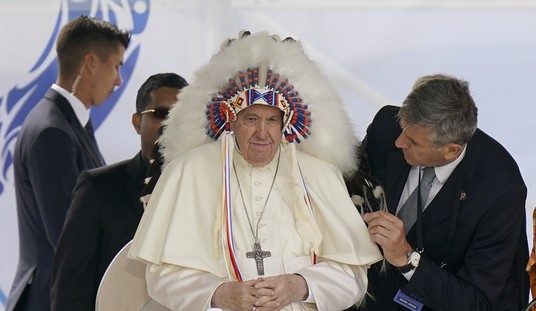The Commerce Department announced that the advance estimate of economic growth in the second quarter fell to a 2.4% annualized rate, down from a “real” GDP rate of 3.7%. The slowdown came across a broad swath of the economy, with most indicators reduced but still positive in Q2:
Real gross domestic product — the output of goods and services produced by labor and property located in the United States — increased at an annual rate of 2.4 percent in the second quarter of 2010, (that is, from the first quarter to the second quarter), according to the “advance” estimate released by the Bureau of Economic Analysis. In the first quarter, real GDP increased 3.7 percent. …
The increase in real GDP in the second quarter primarily reflected positive contributions from nonresidential fixed investment, exports, personal consumption expenditures, private inventory investment, federal government spending, and residential fixed investment. Imports, which are a
subtraction in the calculation of GDP, increased.The deceleration in real GDP in the second quarter primarily reflected an acceleration in imports and a deceleration in private inventory investment that were partly offset by an upturn in residential fixed investment, an acceleration in nonresidential fixed investment, an upturn in state and local government spending, and an acceleration in federal government spending.
What went up, and what went down? Auto sales went negative by a slight amount (0.01%) after being up a bit in Q1 (0.74%). Most everything else stayed in positive growth territory, but less so than in the previous quarter:
- Computers: +0.04%, Q1 +2.1%
- Price index on domestic purchases: +0.1%, Q1 +2.1%
- Durable goods sales: +7.5%, Q1 +8.8%
- Nondurable goods: +1.6%, Q1 +4.2%
- Personal consumption: +1.6%, Q1 +1.9%
Inventory management comprised less of the growth figure in Q2:
The change in real private inventories added 1.05 percentage points to the second-quarter change in real GDP after adding 2.64 percentage points to the first-quarter change. Private businesses increased inventories $75.7 billion in the second quarter, following an increase of $44.1 billion in the first quarter and a decrease of $36.7 billion in the fourth.
The big area of quarter-on-quarter growth came from government spending, however:
Real federal government consumption expenditures and gross investment increased 9.2 percent in the second quarter, compared with an increase of 1.8 percent in the first. National defense increased 7.4 percent, compared with an increase of 0.4 percent. Nondefense increased 13.0 percent, compared with an increase of 5.0 percent. Real state and local government consumption expenditures and gross investment increased 1.3 percent, in contrast to a decrease of 3.8 percent.
Without the government spending, Q2 would have looked pretty bad, it appears — and that spending bubble is nearing its end. It still leaves the private economy moribund. A decline in the growth rate does not bode well for the rest of the year, and this certainly won’t have employers leaping back into the kind of expansion needed to create massive amounts of new jobs.
Update: Reuters reports that “U.S. economic growth slowed more than expected.” Just another form of its favorite adverb.
Update II: It seems pretty clear why Joe Biden has been out touting “Recovery Summer”; the administration expected all of this new government spending in the second quarter to save their bacon on the economy. Obviously, that’s working as well as Biden’s Chip Diller imitation.
This is a political disaster for Democrats. There’s no way to spin a 2.4% GDP rate as a positive step in a recovery. Worse yet, the pattern has been to revise these numbers downwards when Commerce firms up its data. The next statement of Q2 GDP will come on August 27, just before Congress comes back in session and right at the prime time of summer campaign season, just a week before Labor Day. If this drops much lower in the next iteration, Democrats will have to explain the failure of their economic program to angry voters across the nation — and they’re not going to want to hear “It’s Bush’s fault!” two years after electing Obama and four years after giving Nancy Pelosi and Harry Reid control of Congress.








Join the conversation as a VIP Member